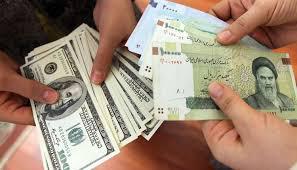The rise in the value of the dollar has been one of the most enduring nightmares of the Iranian middle classes over the past decade. In the last 10 days, Iranian society has again been anxiously observing the volatile situation of foreign exchange rates.
Three months ago on March 21, the value of the dollar in the open market was less than 15,000 tomans. But by June 21, it had soared to close to 20,000 tomans. A 33 percent devaluation of Iran’s national currency against the dollar in 90 days is not insignificant.
Experience has shown that the first signs of major economic crises occur in the open currency market. This is what happened in 2010 and 2011, and at the outset of the most recent economic crisis, the first sign of which appeared in the winter of 2017 in Ferdowsi Square in Tehran and which, by the spring of 2019, had affected all the pillars of Iran's economy and society.
These crises have affected not merely the economic but also the social fabric of Iranian society. Reports indicate that the average purchasing power of every individual Iranian has decreased by about 15 percent compared to 10 years ago. By contrast, the average purchasing power of citizens in some neighboring countries has increased by 20 percent during the same period. The foreign exchange market is also one of the objective manifestations of wider instability in Iran, including political instability.
The Iranian middle class values its position in comparison to that of people in other countries, and of its immigrant compatriots. In 2009, a young engineer who had just graduated from university could easily earn about one million tomans a month: something like US$1,000. This income would give him the opportunity to travel abroad and buy goods and services that other young people in the world benefited from.
Now, suppose that the income of the same young person is 10 million tomans per month, which is even not the case for newcomers to the labor market. That 10 million is now worth less than $600. His potential ability to even encounter citizens of other countries, let alone compete with them, has been drastically reduced.
Reduction in the power of competition is not just an abstract phenomenon, but in the manifest in harmful real-world social phenomena such as the emigration of elites and athletes. When the gold medal of a national champion in Iran begins to look insignificant compared to the monthly salary of an athlete abroad, they will be tempted to leave. When those with money to burn realize how little they can afford in practice compared to those on middling incomes elsewhere, the incentive to remain in Iran will decrease day by day.
The impact of this is not limited to the middle classes. As this group is diminished day by day, opportunities for social mobility on the part of lower-income and marginalized people also shrink as opportunities to progress dry up. Those that in the past hoped to improve their position through studying and climbing the career ladder are now increasingly having to look for short-cuts and high-risk opportunities.
An increase in the price of the dollar, or in other words, a devaluation of the Iranian national currency, also affects the macroeconomic indicators. Inflation is the most tangible of these. Most of Iran's goods and services are supplied from abroad and according to Iranian customs officials, Iran's imports last year were close to $44 billion. The price of these goods and services is steeply rising.
The value of currency and the amount of currency exchanged is one of the most important factors in increasing liquidity. According to Central Bank statistics, in March 2020, about half of the total liquidity of Iran was comprised of foreign assets held by the banking system. In such circumstances, it is natural that the increase in the price of the dollar will be followed by inflation inside Iran.
Price archives show that on November 20, 2011, the US dollar was priced at 1357 tomans on the Tehran exchange. By June 24, 2020, the dollar was priced at 18,840 tomans. In eight years, seven months and five days, the price of the dollar has increased 14-fold in Iran, while the inflationary value of 1357 tomans in November 2011 should not have been more than 7,000 tomans. Inflation in the value of the dollar has occurred simultaneously with massive general inflation in Iran.
visit the accountability section
In this section of Iran Wire, you can contact the officials and launch your campaign for various problems

























comments